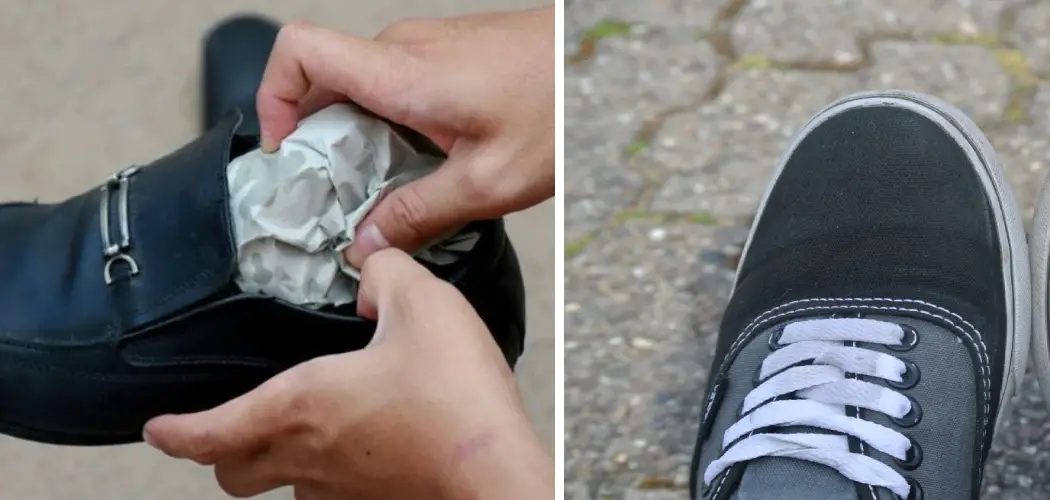There are days when you don’t want to wear your leather shoes. For example, maybe it’s too hot outside, or you’re going to be doing a lot of walking and don’t want them to get too scuffed up. In cases like this, it’s nice to have a backup pair of stretchy shoes that you can slip on without any trouble.
The only problem is, if your only pair of stretchy shoes are not leather, then they might not fit as well as you’d like them to. So today, I will teach you how can I stretch my shoes that are not leather until they fit perfectly!
Shoes are made out of different materials for different reasons. Leather is often used because it is strong and durable, but it can be stiff when it’s new. If you have a pair of shoes that are not leather, they might be stretchier and more comfortable to wear right away. The downside is that they might not last as long as leather shoes, and they might not fit as well either.
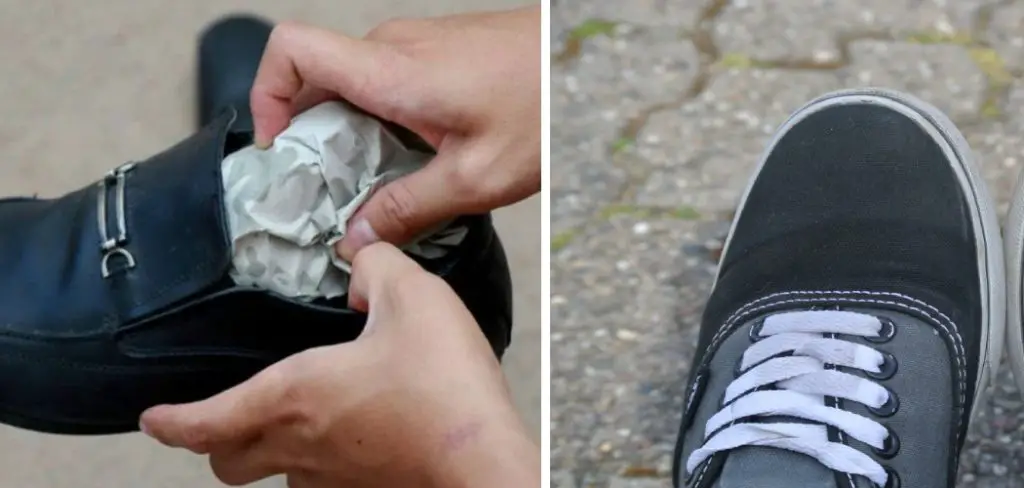
Summary: To stretch non-leather shoes, start by stuffing them with damp newspaper or socks. Then, place them in the freezer for a few hours, as the water in the newspaper or socks will expand as it freezes, stretching out the shoes. Alternatively, you can use heat to stretch the shoes by heating them up with a hairdryer and then wearing them with thick socks until they cool down.
A Detailed Guide on How Can I Stretch My Shoes That Are Not Leather
Way 1: Wearing Shoes in the Evening
If your shoes are just a little too tight, one way to stretch them out is by wearing them in the evening. This works exceptionally well if you have a job where you’re on your feet all day because your feet will be swollen by the end of the day. When you get home, put on your tight shoes and do light stretching exercises. You can also put ice packs on your feet to help reduce the swelling. After about half an hour, take off the shoes and give your feet some time to rest.
Put the shoes back on the next day and go about your day as usual. By the end of the day, they’ll be fitting a lot better. Repeat this process every day until the shoes fit comfortably.
Way 2: Try Thick Socks and a Blow Dryer at home
If your shoes are made of a material, not leather, you can try to stretch them using thick socks and a blow dryer. First, put on two or three pairs of thick socks, and then put your shoes on. Next, use a blow dryer on high heat and blow warm air into the shoes. You should hold the blow dryer close to the shoe and move it around until the entire shoe is warm. Keep the shoes on for about five minutes, then take them off and let them cool down. You may need to repeat this process a few times for the best results.
The amount of heat you need will vary depending on your shoes’ type of material. If they are made of thin, stretchable material, you will only need to use low or medium heat. If they are made of a thicker, less-stretchable material, you will need to use high heat.
Way 3: Use Newspapers
If your shoes are not leather, you can use newspapers to stretch them. You will need at least three newspapers.
Put on a thick pair of socks and tightly tie the laces of your shoes so that they are tight. Place one or two newspapers inside the shoe to fill up the toe area and slightly overlaps the sides. Tape the newspaper(s) using masking or duct tape. Make sure that there are no wrinkles in the paper. Leave the shoes to stretch for 24 hours. Remove the newspapers and retape the shoes if necessary. Wear the shoes for a few hours to test them out.
If the shoes are still too tight, repeat the process using more newspapers. But, again, make sure that you do not overstretch the shoes, or they may tear.
Way 4: Try to Use Shoe Trees
An adjustable shoe tree, also known as a stretching tool, is an accessory for shoes that helps maintain the shoe’s shape and stretch it to fit your feet.
Shoe trees come in two main types: wooden and metal. The metal ones tend to be more adjustable, as they have multiple contact points with the shoe.
Adjustable shoe trees work by inserting them into the toe box of the shoe and then adjusting them to fit your feet. The metal ones usually have a screw mechanism that you can use to expand or contract the length of the tree, while the wooden ones typically have a series of notches that you can adjust.

Once you have adjusted the shoe tree to fit your feet, you insert it into the shoe and leave it there overnight. The shoe tree will help stretch out the leather and maintain the shoe’s shape.
You can also use adjustable shoe trees to help dry out wet shoes. If your shoes are wet, insert the shoe tree into the shoe and leave it there for a few hours. This will help to speed up the drying process.
An adjustable shoe tree helps to maintain the shape of the shoe. It helps to stretch the leather in the shoe to fit your feet. It can be used to dry out wet shoes. It is an affordable way to protect your shoes. It helps to maintain the shape of the shoe.
Way 5: Using Frozen Zip-Close Bag Method
If your shoes are made of a non-leather material such as nylon, you can use the frozen zip-close bag method. This will help to stretch out the fabric and make your shoes fit better.
Place the shoes in a zip-close bag and freeze them for several hours. Once they are frozen, remove them from the bag and let them thaw at room temperature. You should then be able to put them on and wear them as usual.
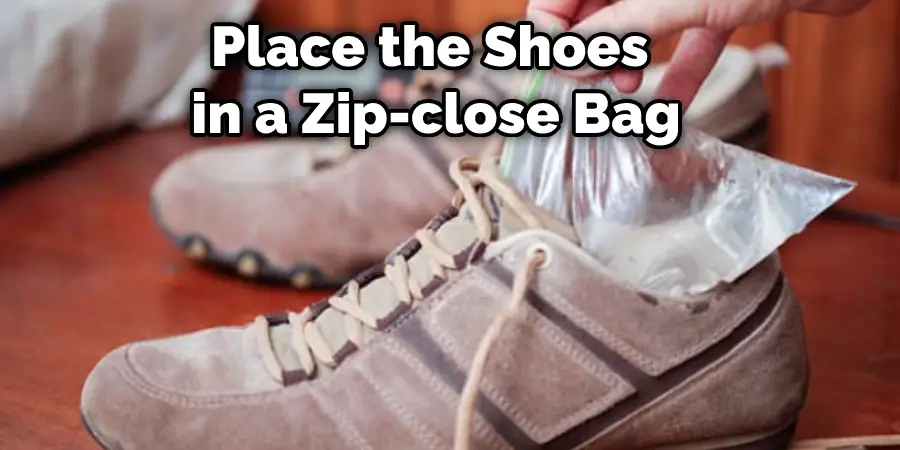
This is a great way to stretch out too tight or too small shoes. It is also an excellent way to get rid of wrinkles in the fabric. Just be sure to let the shoes thaw entirely before trying to wear them, as they may be a bit too cold at first.
This method is very effective at stretching shoes not made from leather. The ice will cause the material to expand, stretching the shoe. This method takes a few hours to complete. You will need to freeze the water and let the shoes thaw completely before you can wear them again.
Way 6: Use the Peeled Potato
One way to stretch shoes that are not leather is to use the peeled potato hack. This method is simple and only takes a few minutes. All you need is a potato and some water.
Cut the potato in half so that it is about the size of your shoe. Soak the potato in water for about five minutes. Place the wet potato on top of your shoe.
Like a book or a can of soup, use a heavy object to press down on the potato for about five minutes. Then, remove the potato and let your shoe air dry.
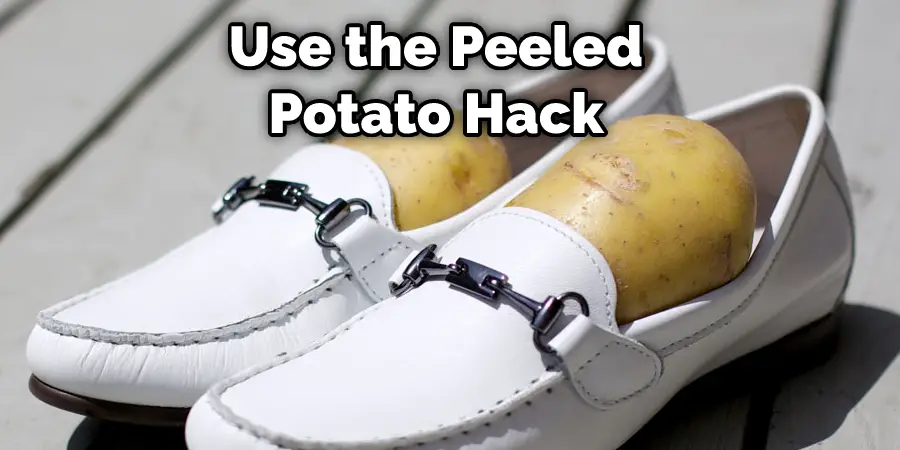
The potato will help stretch your shoes while they are still wet. Make sure to let them air-dry afterward, or they may become too stretched out.
Way 7: Use Shoe Stretch Sprays
Shoe stretch sprays and liquids are a popular way to stretch shoes that are not leather. These products work by adding moisture to the shoe, which causes it to expand. Test the spray or liquid on an inconspicuous spot on the shoe first, as some products may cause color changes.
Apply the spray or liquid to the shoes and then put them on. Wear the shoes for a few hours and then remove them. The shoes should be stretched slightly. If they are not, reapply the product and wear them again.
Be careful when using shoe stretch sprays and liquids, as they can make shoes too big and cause them to slip off your feet. Also, read the product’s instructions carefully to avoid any potential damage.
Some people find that using a shoe stretcher is better than using a spray or liquid. If you have a shoe stretcher, use it according to the manufacturer’s instructions.
Way 8: Using Rubbing Alcohol
Rubbing alcohol is an effective way to stretch shoes that are not leather. It is a liquid solution made up of about 50% ethanol and 50% water. Ethanol is the main ingredient in liquor, so rubbing alcohol has a strong odor. When you spray or pour rubbing alcohol on leather, it will help to soften the leather and make it more pliable. This will allow you to stretch the shoe without damaging it.
If your shoes are made of a synthetic material such as nylon, you can stretch them using rubbing alcohol.
Pour a small amount of rubbing alcohol into a bowl. Soak a cloth in the alcohol. Wring out the excess liquid so the cloth is damp but not soaking wet. Rub the cloth over the surface of the shoe. Repeat this process until the shoe has stretched to your desired size. Allow the shoe to dry completely before wearing it.
Way 9: Get a Shoe Stretcher
Shoe stretchers are devices that can be inserted into a shoe to stretch it in width and length. They come in various shapes and sizes, but the most common type is the two-way stretcher with a toe box and a heel box.
There Are a Few Ways You Can Use a Shoe Stretcher:
- The primary way is to insert the stretcher into the shoes and leave it there for a certain amount of time (usually overnight).
- You can also use heat if you want to expedite the stretching process. For example, you can soak the shoes in hot water for a few minutes before inserting the stretcher.
- Another way to use the stretcher is to apply pressure on certain parts of the shoe. For example, you can put the stretcher in the toe box and then put a book on top so that the pressure is concentrated on the front of the shoe.
Be careful not to over-stretch the shoe, as this can damage the fabric or rubber. It may not be wearable if you stretch the shoe too much.
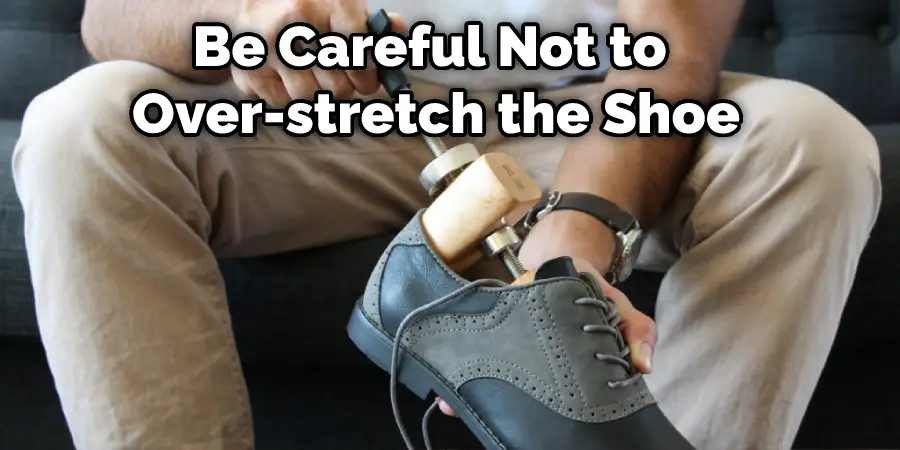
You can use a shoe stretcher at any time, but it’s usually recommended to do it when the shoes are still new so that they will stretch more easily. How often you need to use the stretcher depends on how you usually wear your shoes. Shoe stretchers can be bought at most department stores or online. Prices start from around $10.
Way 10: Find a Shoe Repair Professional
If you have a leather shoe that is not stretching the way you want, you may need to take it to a shoe repair professional. They will be able to stretch the shoe using various methods, such as heat, moisture, or pressure. It’s important to note that this process can be expensive and may not be covered by your warranty.
If your shoes are made of synthetic material, take them to a specialist who can help you stretch them safely.
It’s also a good idea to get your shoes stretched if they are starting to feel tight or uncomfortable. This will prevent them from becoming too stretched out and unusable.
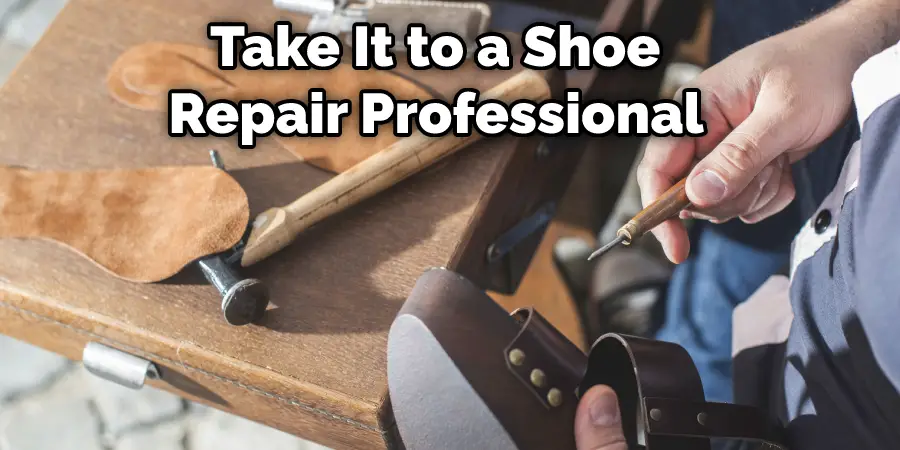
Hopefully, one of these methods will help you stretch your non-leather shoes. Just be patient and take your time, and you’ll be able to get them to fit comfortably. Good luck!
Tips:
- If you have a shoe stretcher, use it!
- If the shoes are made of synthetic material, try boiling them in water to stretch them out.
- If the shoes are tight and uncomfortable, you can also try wearing socks over them and then putting them in the freezer overnight. This will help the material to stretch out a bit.
- Be patient! It may take a few tries to get the desired results.
You Can check it Out to Shrink Leather Shoes With Vinegar
Frequently Asked Questions
What Shoe Materials Can Be Stretched?
Some of the most commonly stretched materials include leather, canvas, and suede. Here are a few tips on how to stretch these materials:
- Pour a small amount of water into the shoe and place it on a flat surface. Wet the material and start gently stretching it from the middle outwards using your fingers. Do not over stretch or you may damage the material.
- Use a hair dryer on high heat to heat up the material and stretch it further. Repeat as needed until the shoe is fully stretched.
- Place a damp cloth inside the shoe and hold it in place while you stretch the material from the inside out with your hands. Be careful not to damage the cloth or the material!
- Use a vacuum cleaner to remove any excess water or air and seal the shoe closed for storage.
Can Material Shoes Be Stretched?
You should be aware of the risks prior to stretching them. By stretching material shoes too far, you may tear or damage the fabric and resulting in increased wear and tear on your footwear. Additionally, if the shoe does not fit well after being stretched, it may become difficult to return or exchange for a different size. Instead, try sizing up initially and making sure that the new size fits well before stretching.
Can a Rubber Shoe Be Stretched?
It depends on the type of rubber shoe and how much it has been stretched. However, generally speaking, if the rubber shoe is elastic or stretchy in nature, then it can be stretched. If the rubber sole begins to crack or split, then stretching may not be a good solution as this will only hasten its deterioration.
Do Vegan Shoes Stretch Like Leather?
While vegan shoes may look and feel stiff at first, they will eventually stretch to conform to your feet. This is because vegan shoes are made of materials that are naturally elastic such as hemp, spandex, or rayon. These materials can stretch up to five times their original size without breaking down or losing its shape.
In addition to stretching, vegan shoes also have a softening effect on the skin due to the presence of plant-based moisturizers and oils in the construction process. As a result, you likely won’t experience any dryness or cracking in your feet while wearing them over time.
Conclusion
We hope you have gone through the article on how can i stretch my shoes that are not leather. So, if you are in a bind and need to stretch your non-leather shoes, there are some methods you can try. However, we recommend using caution when trying any of these ways, as they may not be effective for all shoes and could damage them further.
You Can check it Out to Keep Leather Boots from Cracking

